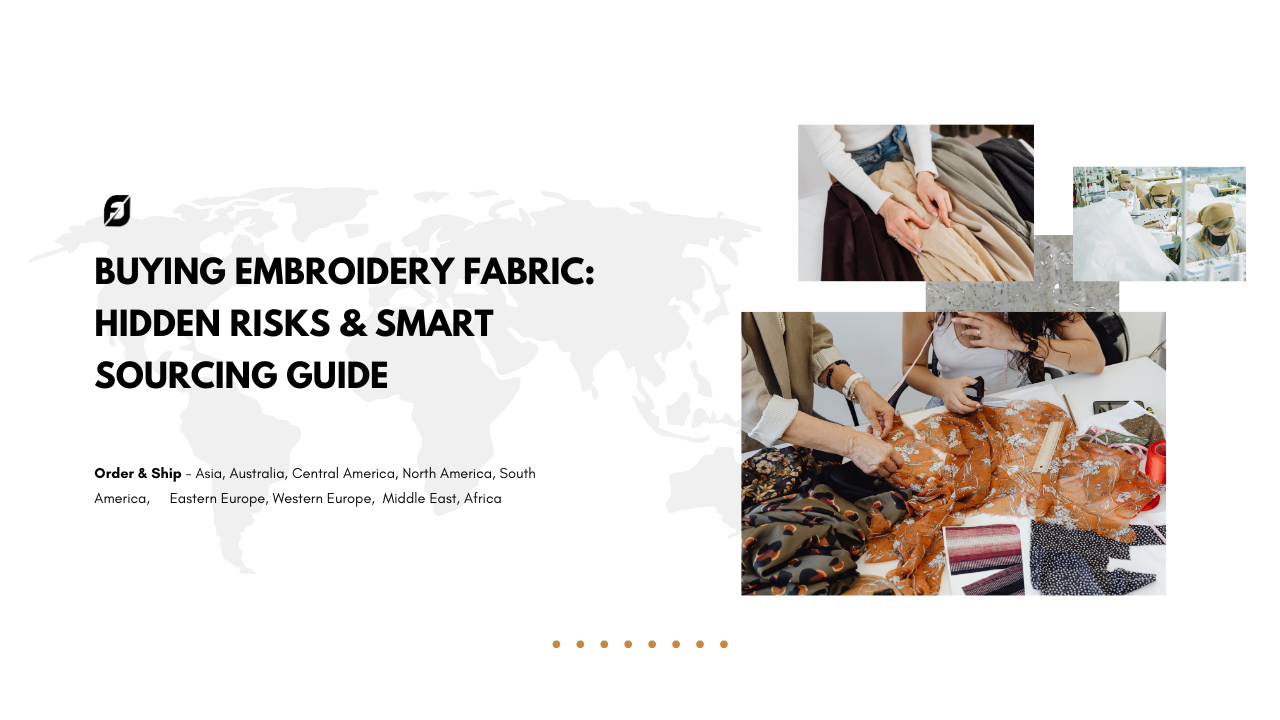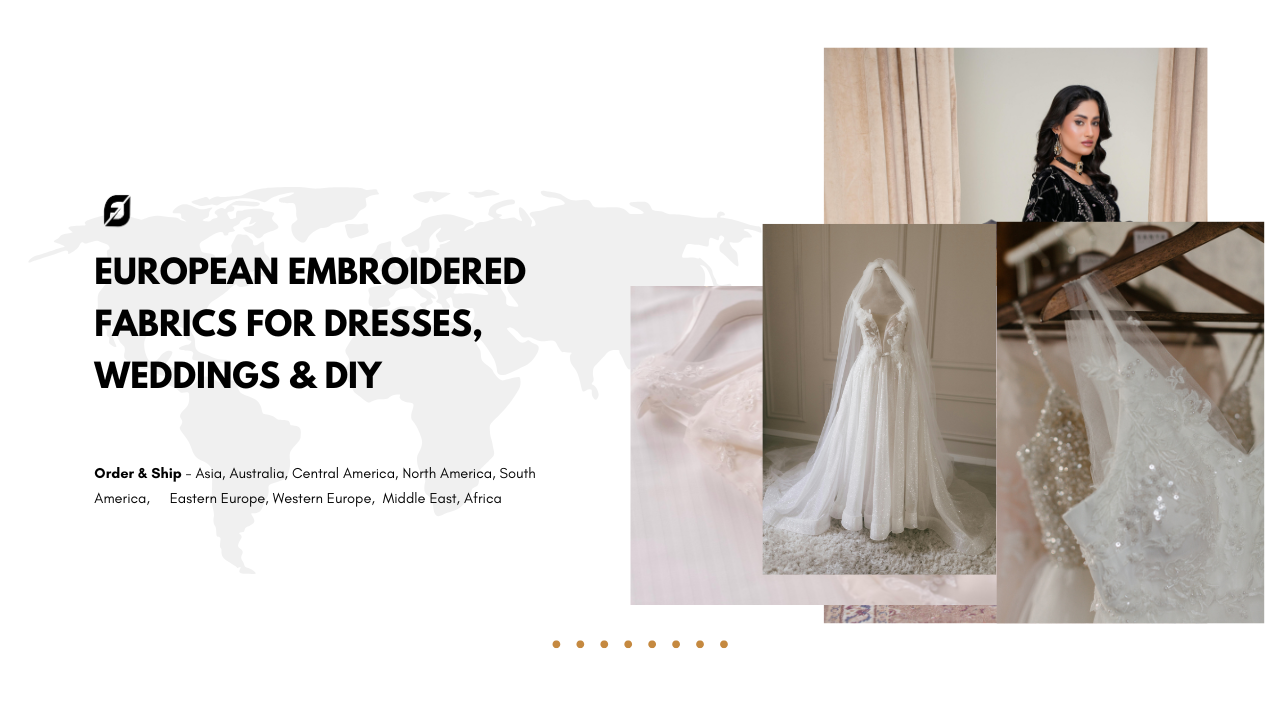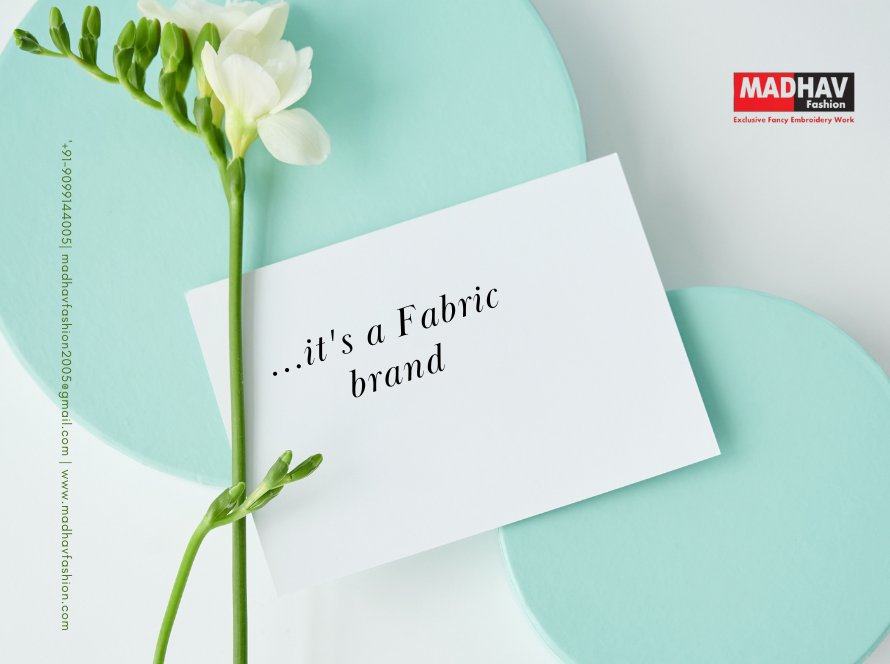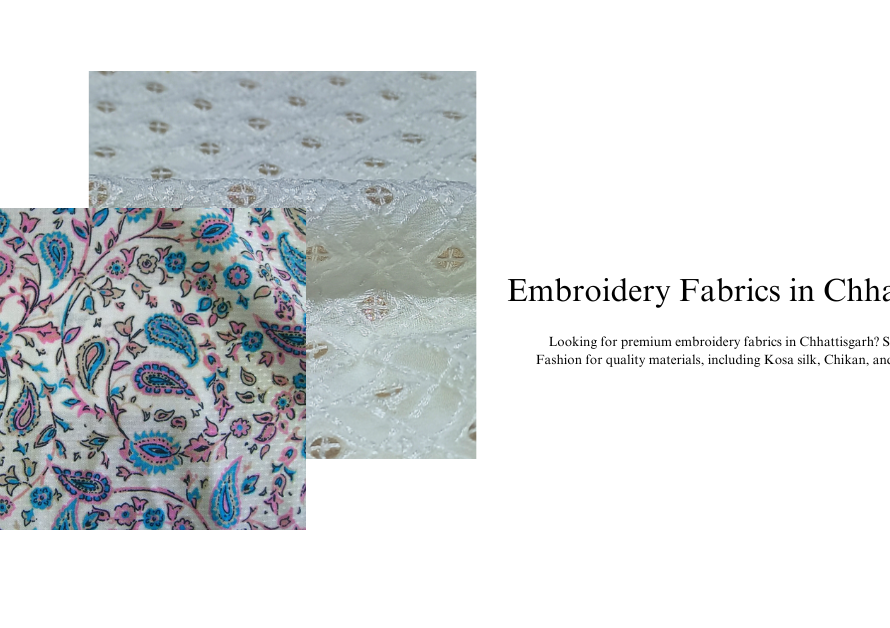Embroidery is an art form that transforms plain fabric into a masterpiece. Whether you’re a professional embroiderer or a hobbyist, selecting the right fabric is crucial for the success of your project.
As a wholesale fabric supplier, we understand the importance of choosing the perfect material for embroidery. we’ll walk you through the key factors to consider when selecting embroidery fabric, ensuring your creations stand out and rank high in both quality and appeal.
How to Choose the Best Embroidery Fabric for Your Project
Why Fabric Choice Matters in Embroidery
The fabric you choose directly impacts the final look, durability, and ease of your embroidery project. The right fabric will hold stitches well, prevent puckering, and complement your design. On the other hand, the wrong fabric can lead to frustration, wasted time, and subpar results.
Key Factors to Consider When Choosing Embroidery Fabric
1. Fabric Weight
The weight of the fabric determines how well it can support the embroidery stitches.
- Lightweight Fabrics: Ideal for delicate designs, lightweight fabrics like cotton voile, silk, or organza are perfect for intricate patterns. However, they may require stabilizers to prevent distortion.
- Medium-Weight Fabrics: Cotton, linen, and polyester blends are excellent for most embroidery projects. They are sturdy enough to hold stitches without being too heavy.
- Heavyweight Fabrics: Denim, canvas, and upholstery fabrics are great for bold, dense designs. They can handle heavy stitching without losing shape.
2. Fabric Weave
The weave of the fabric affects how the stitches sit on the surface.
- Tight Weave: Fabrics like cotton poplin or twill have a tight weave, making them ideal for detailed embroidery.
- Loose Weave: Fabrics like linen or burlap have a looser weave, which can give a rustic look but may require stabilizers to prevent gaps in stitching.
3. Fabric Stretch
Stretchy fabrics like knits or spandex can be challenging to embroider because they tend to shift during stitching. If you’re working with stretchy materials, use a stabilizer to keep the fabric taut and prevent distortion.
4. Fabric Texture
The texture of the fabric can enhance or detract from your design.
- Smooth fabrics like satin or silk are perfect for showcasing fine details.
- Textured fabrics like tweed or corduroy can add depth to your design but may require thicker threads or bold patterns.
5. Color and Pattern
Choose a fabric color that complements your thread colors. Solid-colored fabrics are ideal for embroidery as they allow the design to stand out. If you’re using patterned fabric, ensure the pattern doesn’t compete with your embroidery design.
6. Durability and Care
Consider how the finished product will be used. If it’s a decorative piece, delicate fabrics like silk may work. For items that require frequent washing, like towels or clothing, opt for durable fabrics like cotton or polyester blends.
Top Wholesale Fabrics for Embroidery
As a wholesale fabric supplier, we recommend the following fabrics for embroidery projects:
- Cotton: A versatile and widely used fabric, cotton is easy to work with and holds stitches well. It’s perfect for beginners and professionals alike.
- Linen: Known for its natural texture, linen adds a rustic charm to embroidery projects. It’s durable and ideal for home decor items.
- Polyester Blends: These fabrics are durable, wrinkle-resistant, and easy to care for, making them great for everyday items.
- Silk: For luxurious projects, silk is unmatched. It’s smooth, elegant, and perfect for high-end designs.
- Denim: A heavyweight fabric, denim is ideal for bold, dense embroidery designs like jackets or bags.
Tips for Successful Embroidery
- Use Stabilizers: Stabilizers are essential for lightweight or stretchy fabrics. They prevent puckering and ensure smooth stitching.
- Test Your Fabric: Before starting your project, test the fabric with a small design to see how it handles the stitches.
- Choose the Right Needle and Thread: Match your needle and thread to the fabric type. For example, use a sharp needle for tightly woven fabrics and a ballpoint needle for knits.
- Wash and Iron Fabric: Pre-wash and iron your fabric to remove any sizing or wrinkles that could affect the embroidery.
Why Choose Wholesale Fabrics for Embroidery?
Buying wholesale fabrics not only saves you money but also ensures you have a consistent supply of high-quality materials. As a wholesale supplier, we offer a wide range of embroidery-friendly fabrics in bulk, catering to businesses and large-scale projects.
Choosing the best embroidery fabric is the foundation of a successful project. By considering factors like weight, weave, stretch, and texture, you can ensure your designs look stunning and last long. As a trusted wholesale fabric supplier, we’re here to provide you with the best materials for all your embroidery needs.
Ready to start your next project? Explore our wholesale fabric collection today and elevate your embroidery game!
______________________________________
Frequently Asked Questions (FAQs) About Choosing Embroidery Fabric
What is the best fabric for beginners in embroidery?
For beginners, cotton is the best fabric for embroidery. It’s easy to work with, affordable, and widely available in wholesale markets. Cotton has a tight weave, which holds stitches well and prevents puckering.
It’s also durable and can be washed easily, making it ideal for practice projects. Other beginner-friendly options include linen and polyester blends, which offer a good balance of texture and durability. Always start with a medium-weight fabric, as it’s easier to handle than lightweight or heavyweight materials.
Can I use stretchy fabrics for embroidery?
Yes, you can use stretchy fabrics like knits or spandex for embroidery, but they require extra care. Stretchy fabrics tend to shift during stitching, which can distort your design. To avoid this, use a stabilizer to keep the fabric taut.
Ballpoint needles are also recommended for stretchy materials, as they prevent damage to the fabric fibers. Test your design on a scrap piece of fabric before starting the main project to ensure the stitches hold well.
How do I prevent fabric puckering during embroidery?
Fabric puckering occurs when the fabric gathers or wrinkles around the stitches. To prevent this, use a stabilizer, especially for lightweight or stretchy fabrics. Hooping the fabric tightly and evenly also helps.
Choose the right needle and thread for your fabric type, and avoid pulling the thread too tightly while stitching. Pre-washing and ironing the fabric before starting your project can also reduce the risk of puckering.
What is the role of fabric weight in embroidery?
Fabric weight determines how well the fabric can support embroidery stitches. Lightweight fabrics like silk or organza are ideal for delicate designs but may require stabilizers. Medium-weight fabrics like cotton or linen are versatile and suitable for most projects.
Heavyweight fabrics like denim or canvas are perfect for bold, dense designs (How to Choose the Best Embroidery Fabric). Always match the fabric weight to the complexity of your embroidery design for the best results.
How do I choose the right fabric color for embroidery?
The fabric color should complement your thread colors and enhance the design. Solid-colored fabrics are the best choice for embroidery, as they allow the stitches to stand out. If you’re using patterned fabric, ensure the pattern doesn’t overpower the embroidery (How to Choose the Best Embroidery Fabric).
For intricate designs, opt for light-colored fabrics, as they provide better contrast for dark threads. Test your thread colors on a small piece of fabric before starting the project.
What are stabilizers, and why are they important?
Stabilizers are materials used to support the fabric during embroidery. They prevent puckering, shifting, and distortion, especially on lightweight or stretchy fabrics. There are different types of stabilizers, including tear-away, cut-away, and water-soluble, each suited for specific fabrics and projects (How to Choose the Best Embroidery Fabric).
Using the right stabilizer ensures clean, professional-looking embroidery. Always test the stabilizer on a scrap piece of fabric before applying it to your main project.
Can I embroider on patterned or textured fabrics?
Yes, you can embroider on patterned or textured fabrics, but it requires careful planning. Patterned fabrics should have subtle designs that don’t compete with the embroidery (How to Choose the Best Embroidery Fabric).
Textured fabrics like corduroy or tweed can add depth to your design but may require thicker threads or bold patterns. Always test your design on a small section of the fabric to ensure it looks good and the stitches hold well.
What fabrics are best for machine embroidery?
For machine embroidery, medium-weight fabrics like cotton, linen, and polyester blends work best. They are sturdy enough to handle the speed and tension of the machine without distorting (How to Choose the Best Embroidery Fabric).
Stabilizers are essential for machine embroidery, especially for lightweight or stretchy fabrics. Always use the correct needle and thread for your machine, and test the design on a scrap piece of fabric before starting the main project.
Why should I buy embroidery fabric wholesale?
Buying embroidery fabric wholesale is cost-effective and ensures a consistent supply of high-quality materials. Wholesale suppliers offer a wide range of fabrics, from cotton and linen to silk and polyester blends, catering to various embroidery (How to Choose the Best Embroidery Fabric) needs.
Purchasing in bulk is ideal for businesses, large-scale projects, or frequent embroiderers. It also allows you to experiment with different fabrics without worrying about running out of material.






